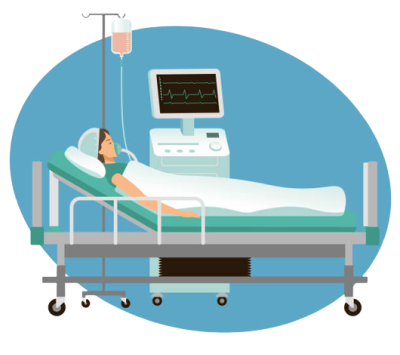CO2 in breath analysis
Discover here a practical use case for our CO2 NDIR Gas sensor.
CO2 in exhaled air theory
Inspired air is composed mainly of nitrogen (78%) and oxygen (21%). Carbon dioxide (CO2) represents only 0.04% of the inhaled air. The exhaled air contains only 17% oxygen. In exchange, the CO2 content increases from 0.04% to 4%. The body burns oxygen in the muscles, generating carbon dioxide as a waste product. The distribution of the captured oxygen is a task of the blood. The transfer of oxygen from the lung into the bloodstream takes place in the pulmonary alveoli.
Exhaled air analysis can provide useful information on health status, especially in the case of several disorders and diseases. Indeed human breath carries multiples volatile organic compounds and biomarkers which can be analysed whith sensors and especially infrared sensors.
SCIENCE
How to measure CO2 in breath with infrared spectroscopy?
Infrared spectroscopy detection relies on an in-depth electronic analysis of the scope of a beam of infrared radiation passing through a breath sample to find the carbon dioxide concentration by identifying molecules based on how they absorb light. Using this technique, spectrometers are able to measure the amount of CO2 present in the breath and display the results.
A light source emits infrared radiation, which is introduced through a measuring chamber and is finally measured by a detector. As the gas is measured in the chamber, it absorbs a part of the radiation due to molecules, reducing the intensity of the optical signal. This allows to deduce the concentration of gas.
However, more than a single compound may absorb radiation at one or more similar wavelengths to carbon dioxide, but the IR spectroscopy technology combined to algorithms is able to identify these particular compounds thanks to their signature wavelengths, and not take them into account.

CO2 monitoring
using capnography

Capnography is the measurement of CO2 in a patient’s exhaled air. It is commonly used during anesthesia procedures and to analyze the causes of respiratory distress. The capnometer measures end-tidal CO2 (ETCO2), or the amount of carbon dioxide released at the end of expiration, which is essential for determining cardiac output. In addition, capnography can be used to analyze the causes of respiratory failure in patients, including asthma, chronic obstructive pulmonary disease, or bronchitis. It can also provide early warning signs of hypoventilation or airway obstruction before changes are seen on a heart rate or blood pressure monitor.
One of the properties of carbon dioxide is that it absorbs infrared radiation. When the patient exhales, a beam of infrared light passes over the gas sample on a sensor. The presence or absence of CO2 is inversely proportional to the amount of light passing over the sensor. A high level of CO2 is indicated by a low amount of infrared, while a low level of CO2 results in a high amount of light.
Fertility monitoring
with CO2 measurement in exhaled air
The CO2 concentration in the exhaled air can be analyzed to determine the fertile period in a woman’s menstrual cycle. Indeed, the naturally occurring hormonal changes the level of CO2 in the exhaled air.
CO2 analysis using infrared technology can determine these fertile days in a non-invasive and painless way. This new technique allows women to naturally monitor their cycle and know when they are most likely to get pregnant.
The exhaled air sample is exposed to infrared radiation passing through the sensor’s measuring cell. The CO2 molecules in the breath absorb some of the IR radiation. The detector is equipped with an optical filter optimized for the gas of interest and detects any difference in the carbon dioxide transmission. The absorption of radiation due to the CO2 molecules thus allows to determine the concentration of the gas.
Metabolic tracking
thanks to CO2 in breath
The analysis of CO2 in the exhaled air allows to know how the metabolism works. Indeed, the body generates more CO2 when it eliminates carbohydrates than lipids.
By analyzing the concentration of CO2 in the exhaled air, it is possible to know what the body eliminates more quickly and therefore to adapt our diet in order to lose weight or to get back into shape.
